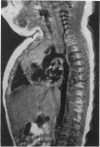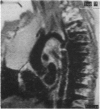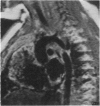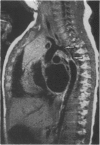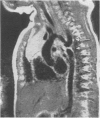Abstract
Nineteen infants with suspected coarctation of the aorta were studied with electrocardiographically gated magnetic resonance imaging on a 1.5 T whole body imaging system. In all cases imaging was successful and produced diagnostic images of high resolution. Coarctation was shown in 12 cases. The position and shape of the coarctation were well displayed by the magnetic resonance images. In addition, they clearly showed the relation of the coarctation to arteries arising from the aortic arch and to the length and diameter of the aortic isthmus and the distal aortic arch. The anatomy was confirmed at operation in all 12 patients, except for two with a small ductus arteriosus (arterial duct), which was not seen in the magnetic resonance images. In the seven remaining patients, coarctation was excluded. Magnetic resonance imaging produced high quality images that showed the anatomy better than other non-invasive methods. It provided all the anatomical information required for surgical correction.
Full text
PDF
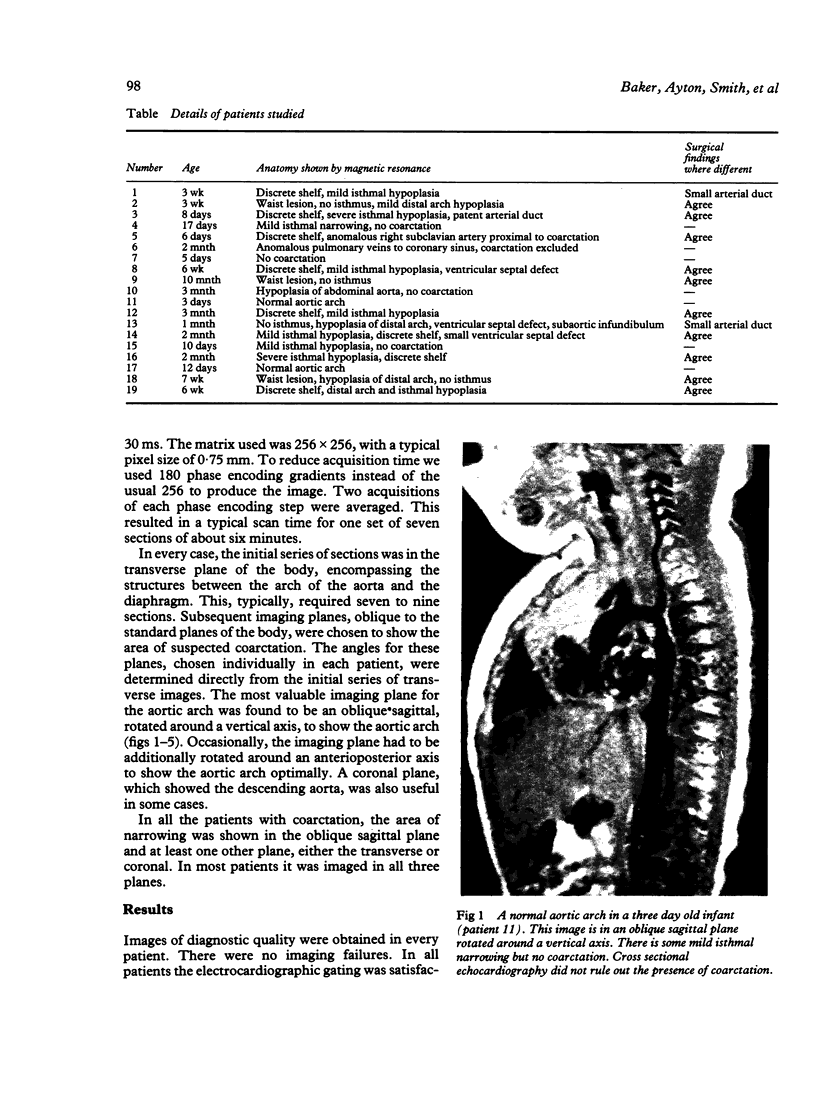
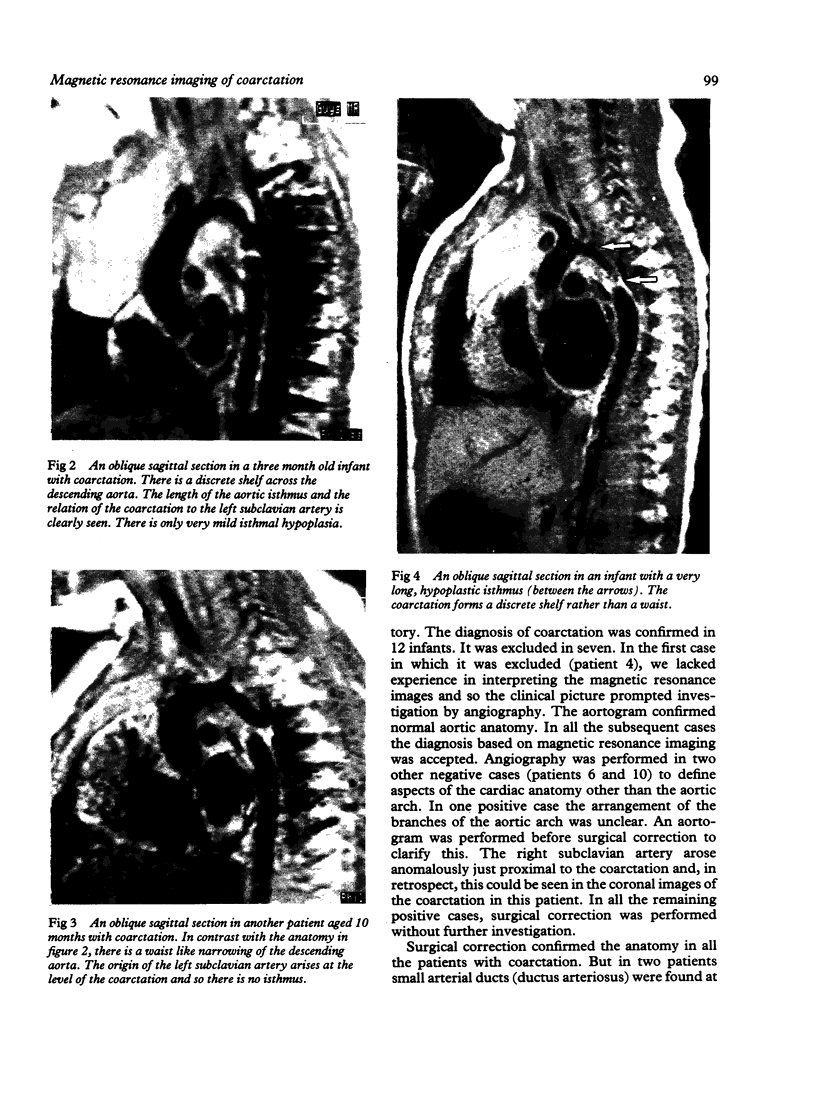
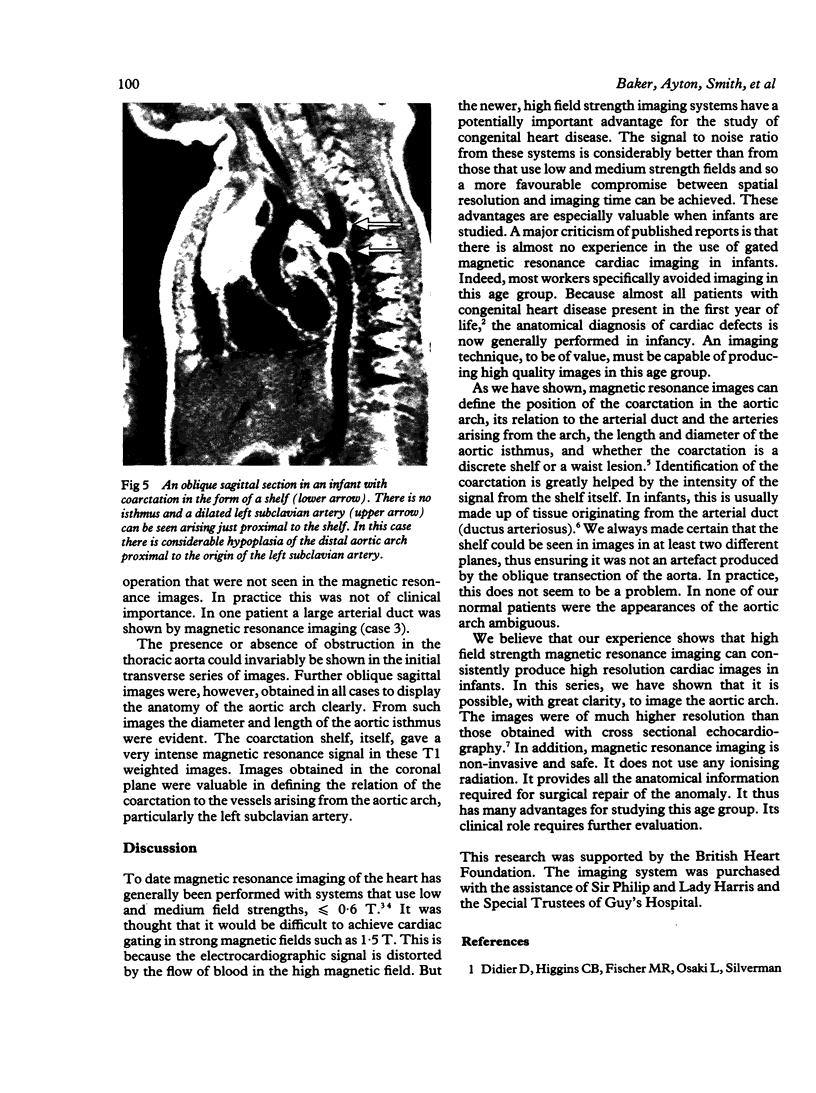

Images in this article
Selected References
These references are in PubMed. This may not be the complete list of references from this article.
- Boxer R. A., LaCorte M. A., Singh S., Cooper R., Fishman M. C., Goldman M., Stein H. L. Nuclear magnetic resonance imaging in evaluation and follow-up of children treated for coarctation of the aorta. J Am Coll Cardiol. 1986 May;7(5):1095–1098. doi: 10.1016/s0735-1097(86)80228-5. [DOI] [PubMed] [Google Scholar]
- Didier D., Higgins C. B., Fisher M. R., Osaki L., Silverman N. H., Cheitlin M. D. Congenital heart disease: gated MR imaging in 72 patients. Radiology. 1986 Jan;158(1):227–235. doi: 10.1148/radiology.158.1.3940387. [DOI] [PubMed] [Google Scholar]
- Elzenga N. J., Gittenberger-de Groot A. C., Oppenheimer-Dekker A. Coarctation and other obstructive aortic arch anomalies: their relationship to the ductus arteriosus. Int J Cardiol. 1986 Dec;13(3):289–308. doi: 10.1016/0167-5273(86)90116-6. [DOI] [PubMed] [Google Scholar]
- Hoffman J. I., Christianson R. Congenital heart disease in a cohort of 19,502 births with long-term follow-up. Am J Cardiol. 1978 Oct;42(4):641–647. doi: 10.1016/0002-9149(78)90635-5. [DOI] [PubMed] [Google Scholar]
- Sinha S. N., Kardatzke M. L., Cole R. B., Muster A. J., Wessel H. U., Paul M. H. Coarctation of the aorta in infancy. Circulation. 1969 Sep;40(3):385–398. doi: 10.1161/01.cir.40.3.385. [DOI] [PubMed] [Google Scholar]
- Smallhorn J. F., Huhta J. C., Adams P. A., Anderson R. H., Wilkinson J. L., Macartney F. J. Cross-sectional echocardiographic assessment of coarctation in the sick neonate and infant. Br Heart J. 1983 Oct;50(4):349–361. doi: 10.1136/hrt.50.4.349. [DOI] [PMC free article] [PubMed] [Google Scholar]
- von Schulthess G. K., McMurdo K., Tscholakoff D., de Geer G., Gamsu G., Higgins C. B. Mediastinal masses: MR imaging. Radiology. 1986 Feb;158(2):289–296. doi: 10.1148/radiology.158.2.3941855. [DOI] [PubMed] [Google Scholar]



